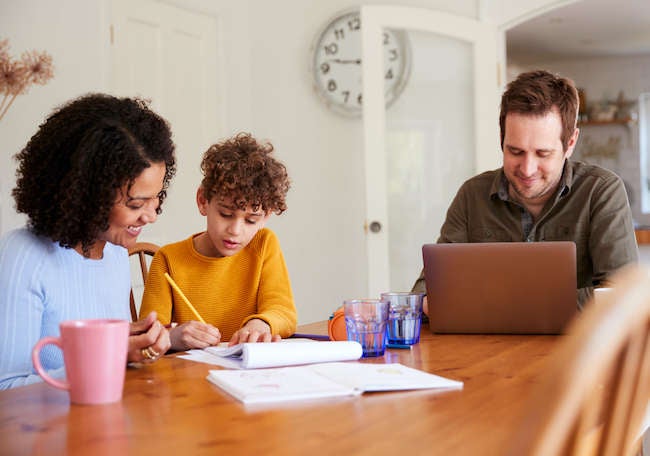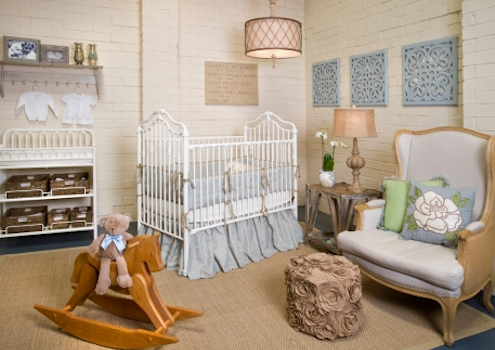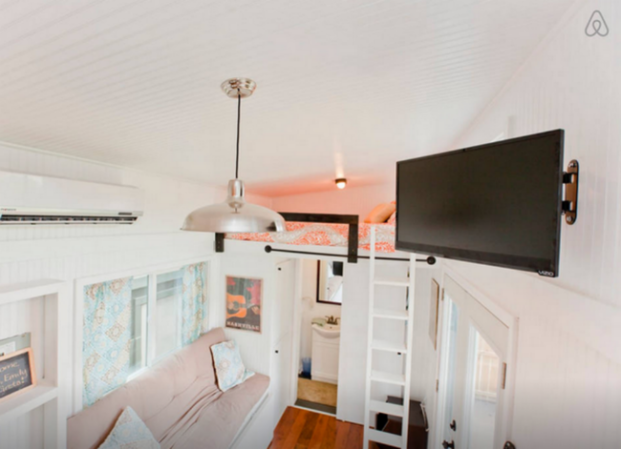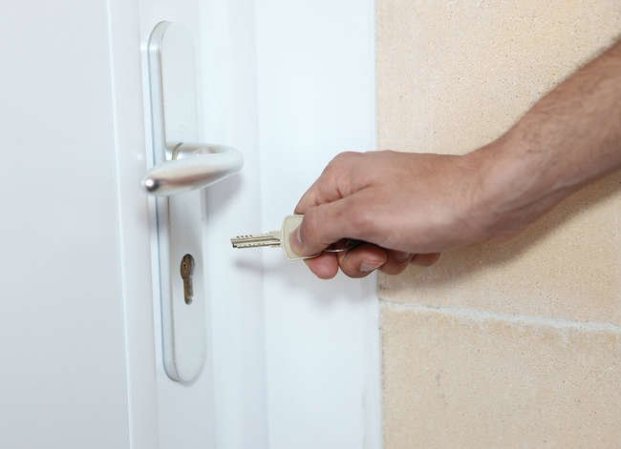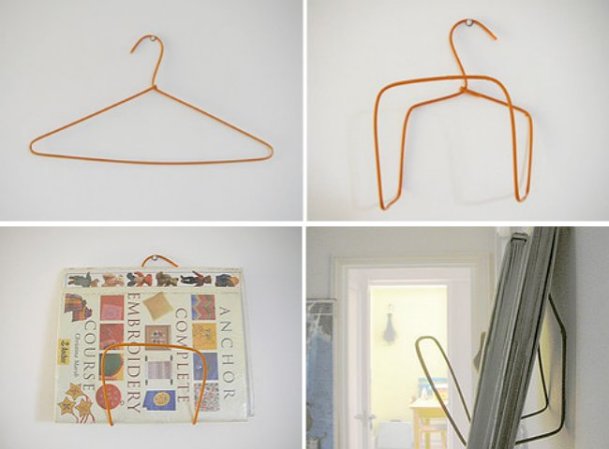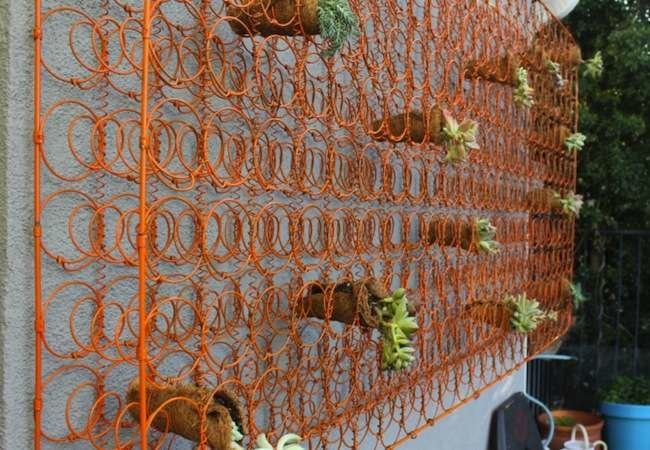We may earn revenue from the products available on this page and participate in affiliate programs. Learn More ›
Back to School Redefined
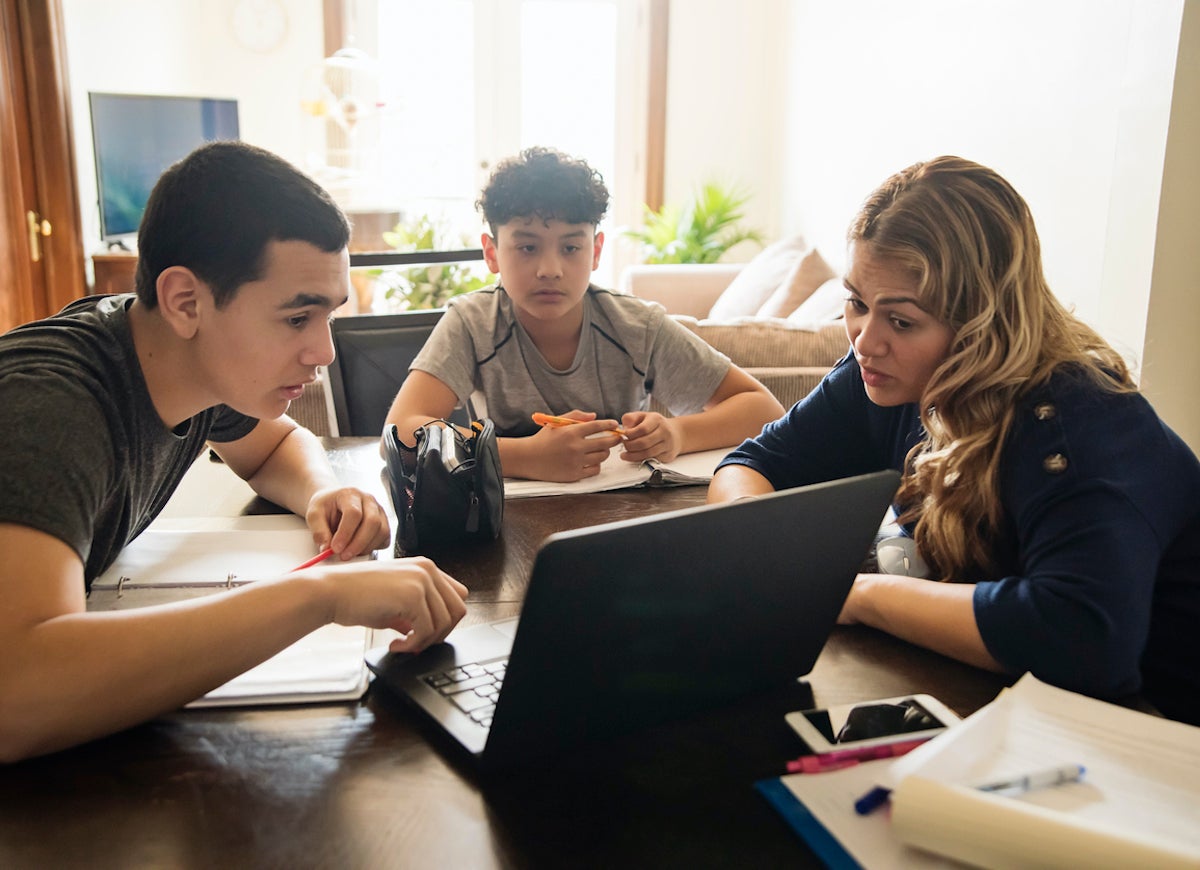
When the Covid 19 pandemic struck earlier this year, school systems and parents scrambled to put remote learning in place for the nation’s children. Now, with at-home learning still a required option at many schools—and many parents considering it safer for their family—it’s time to gear up for another semester of remote education. Fortunately, with a bit of planning and thought, you can create the best possible environment for kids of any age to do schoolwork and have fun.
Some children naturally flourish with at-home learning and others are more easily distracted, but all will benefit from a designated learn-from-home space. Carving out such an area from your limited floor plan and making it conducive to concentration, imagination, and exploration is doable. Just employ these tips from teachers, child and school psychologists, art therapists, counselors, and instructional coaches and it will be, well, maybe not as easy as A-B-C but certainly not as challenging as trigonometry!
Create a Separate Learning Area

Children often work best when they have the structure of a separate area that they associate with school time. While little ones often prefer to be near their parents and may require more flexible learning spaces (such as a kitchen island or coffee table), older children may do well working at a desk in their room. If space is tight, consider a folding table or even a lap desk as a workstation for your child. The area should be quiet, clean, and unless your child is watching a specific program for class, keep the TV off.
Get Your Children’s Input
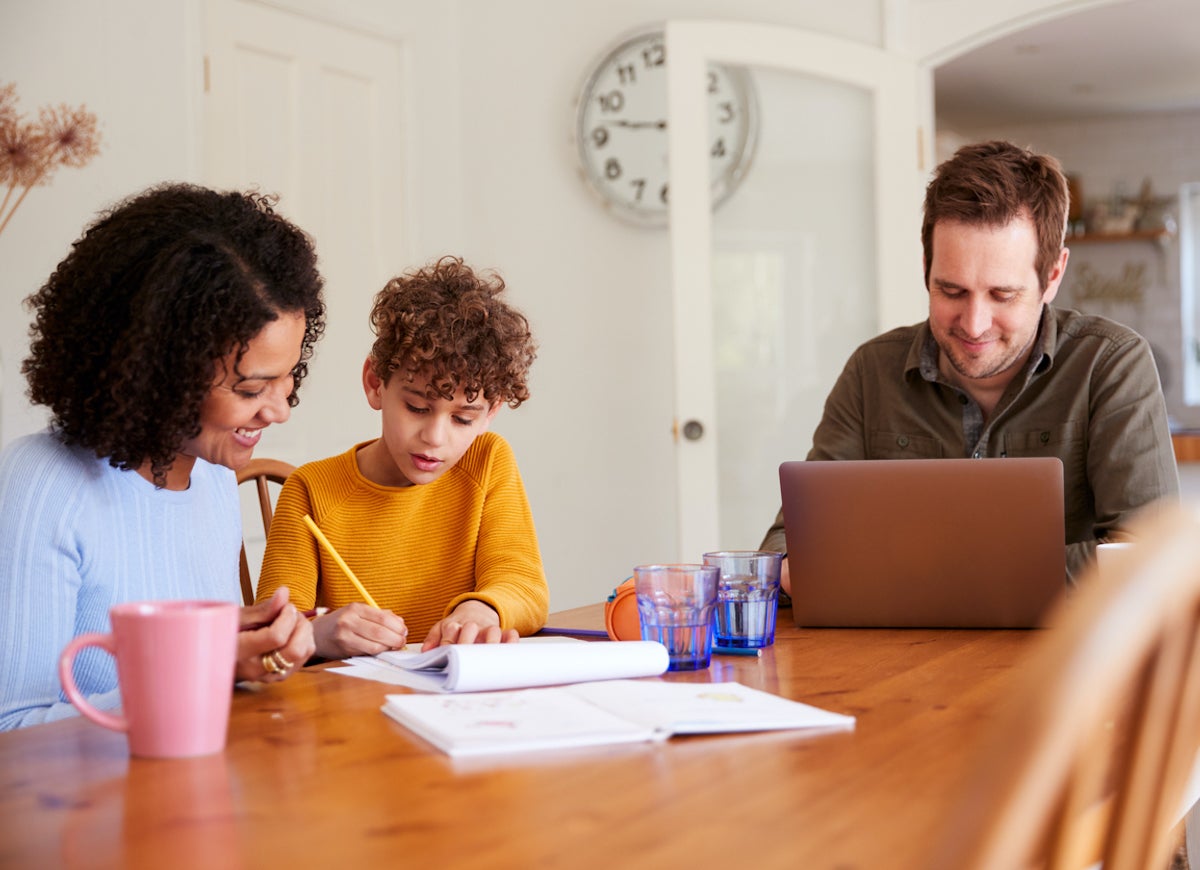
When designing a learn-from-home space, involve your kids to create a personalized area just for them. By allowing your child to play a role in the space, you’ll help generate positivity and excitement around their new learning zone. Have your child pick out some personal elements for the space while keeping it functional and uncluttered. So while fairy lights, for example, can add a sparkly sense of fun, don’t permit a distracting menagerie of stuffed animals on the desk.
Decorate to Educate
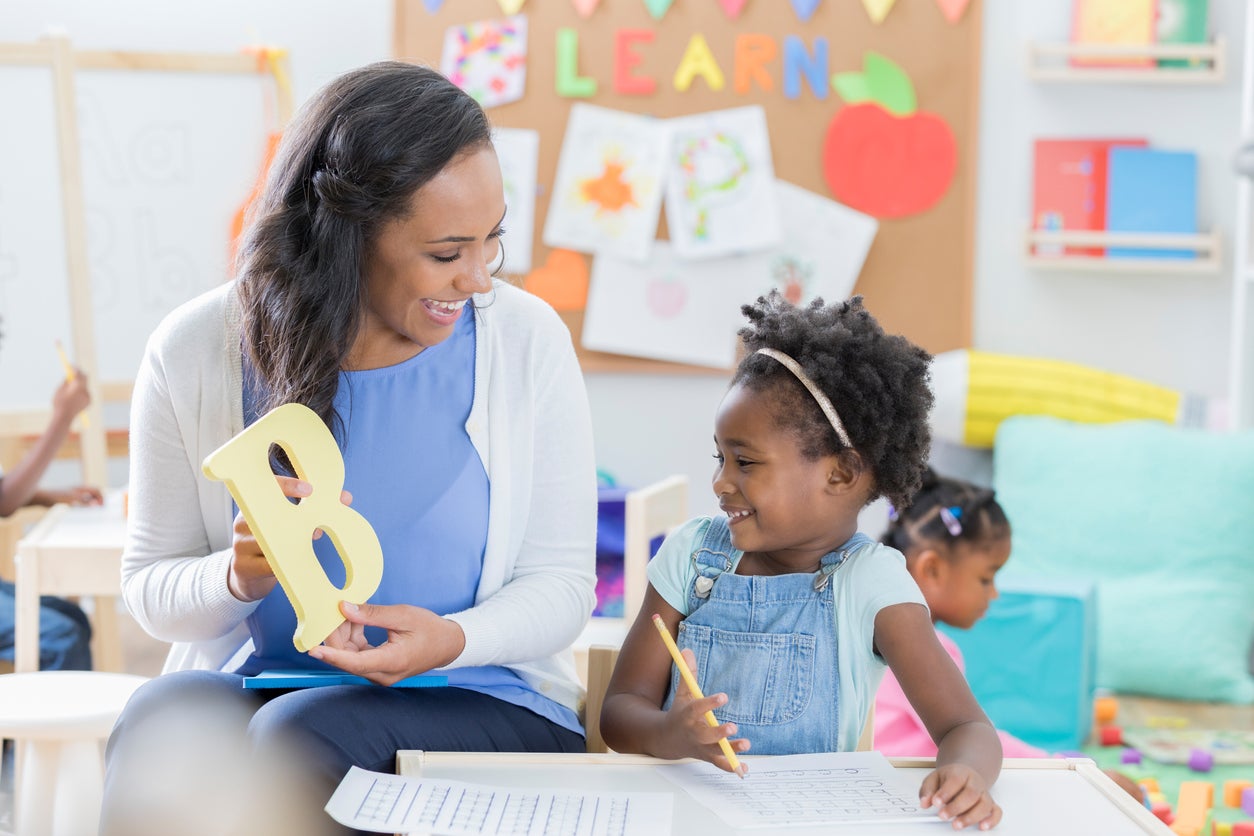
Visual stimuli can be very encouraging to students, so think about what adorned your child’s classroom at your last in-person parent-teacher conference and go from there. Educational decor is key: Large, brightly colored numbers and letters are great for little ones learning to read and count, while maps, poems, inspirational quotes, or pictures of role models (Einstein, anyone?) can engage older kids. But have fun with it, too: Superhero imagery, for instance, can remind kids that they can be and do anything. And to help kids master time management, include visual aids like a calendar, a schedule, and a daily task list.
Take It Outside

Many schools have developed outdoor classrooms as a safer environment during the pandemic, but fresh air has other benefits beyond reducing the risk of infection. Spending time in the great outdoors can help relieve stress, restore attention, and improve creativity, so take the lessons to a patio table or set up a canopy tent. You needn’t restrict the learning to that limited area, however. Being outdoors is conducive to exploration of animal and insect species, ecosystems, plants, geology, and more. Kids will not only get excited about enjoying nature time, they’ll return to indoor studies feeling more refreshed and focused.
Learn by Natural Light

Natural light has documented benefits for increasing concentration in educational environments. It also supports your children’s circadian rhythm—the internal “body clock” that will keep them on a healthy schedule, getting most of their work done earlier in the day and getting sleepy in the evening. Try setting up your child’s learning space near a window or skylight to support concentration and creativity. Just avoid windows that look out onto streets with heavy traffic, which could be a distraction.
“Do I Have to Separate You?”
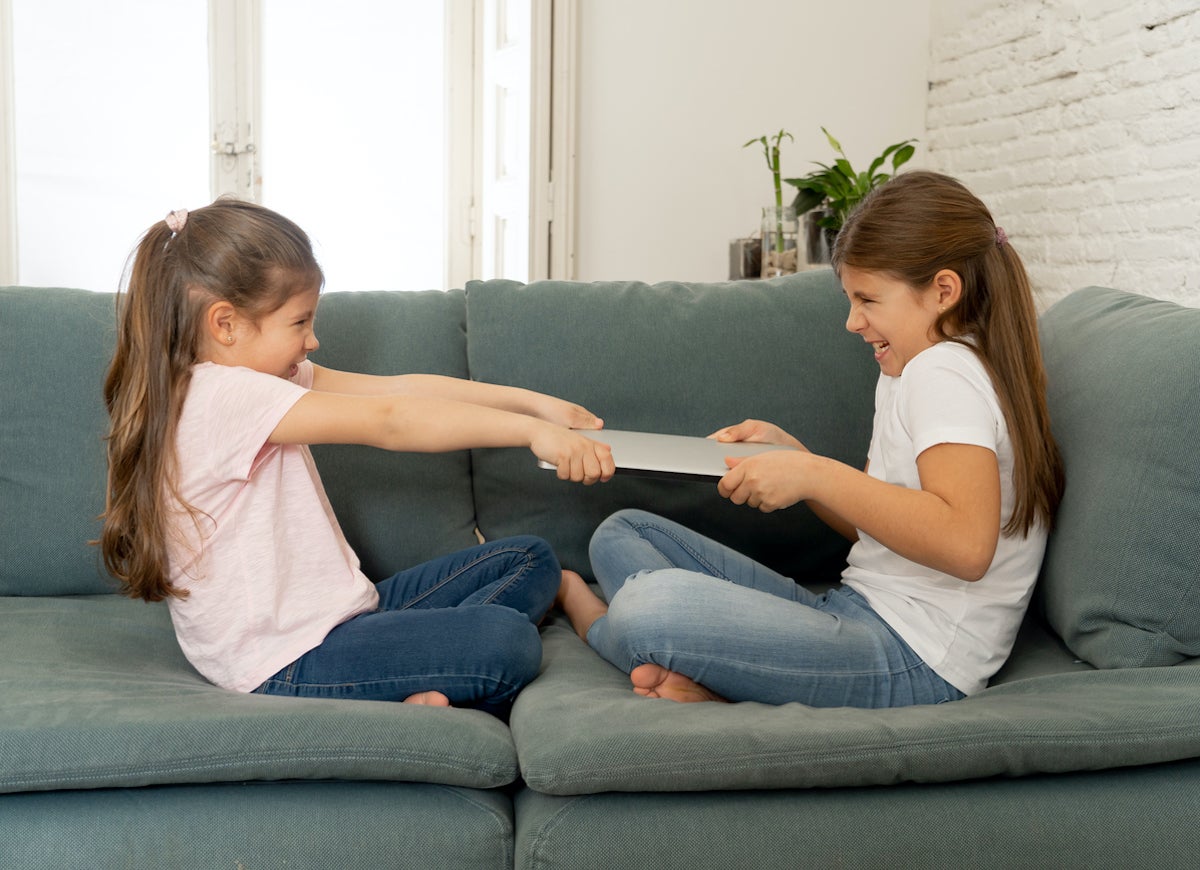
The correct answer is often yes! While older kids can help younger siblings grasp concepts, and those of similar age can quiz each other, the school day shouldn’t devolve into a giggle-fest or sibling squabble. If you have more than one child learning at home, consider separate work spaces—which needn’t be in a separate room: How about a countertop for one child and a folding table for another on the opposite side of the kitchen. Room dividers like folding screens and bookcases are excellent at sculpting space. You can even plunk a stack of books between two kids at the dining table. Also remember that children can study in shifts; while one is taking a break, another can focus on challenging subjects in a separate spot.
Make Them Comfortable

Children need a comfortable seat if they’re going to sit still and focus for extended periods. Comfort, however, doesn’t mean so cozy that they’ll goof off or take a nap. Consider investing in an ergonomic chair or postural reminders for older children, which can prompt them to check their posture and correct it if necessary. You can’t expand your mind if your body is cramped, so ensure your child’s study space is at least 24 to 36 inches by 18 to 24 inches for a small child; older kids will likely need a minimum of 36 to 48 inches. Also encourage kids to leave their seat and get active at “recess”—stretching, walking, practicing a sports skill.
Keep It Clutter-Free

Why be tied down to an old-school idea of a desk! Any flat surface can function fine—just look at these great DIY ideas. What matters most is that the workstation is tidy, so start each morning with a clean slate except for what’s needed for that day’s lessons: schoolbooks, notebooks, computer/tablet, writing utensils, and other pertinent supplies. Include some sort of storage nearby—such as cubbies, totes, even shoeboxes your children decorate themselves—so they can put supplies away when they complete a task or project. Serve lunch and snacks in a different area so wrappers and dishes don’t accumulate.
Establish a Schedule and Rules

If your children are going to learn at home, they must know what’s expected of them throughout the day. Discuss with your kids the importance of a set schedule, task list (adjusted daily if necessary), and, yes, rules. Post these prominently in their learning space as a reminder. Be sure to include breaks in the schedule for exercise, rest, eating, and play.
Remember Each Child Is Different

Schedules are important, but don’t expect every child to adhere to the same one. While Abigail might accomplish a lot at her desk in her bedroom, Matt might feel drawn to his stuff and need a less distracting space, like the dining room. They also may need breaks at different times. Once Matt settles down he can focus for 45 minutes, but Abigail might need a break every 25 minutes. What successful learning looks like for one child won’t be the same for another, so be flexible and open-minded as you learn how each child learns, and support their different styles accordingly.
Don’t Center Around a Screen
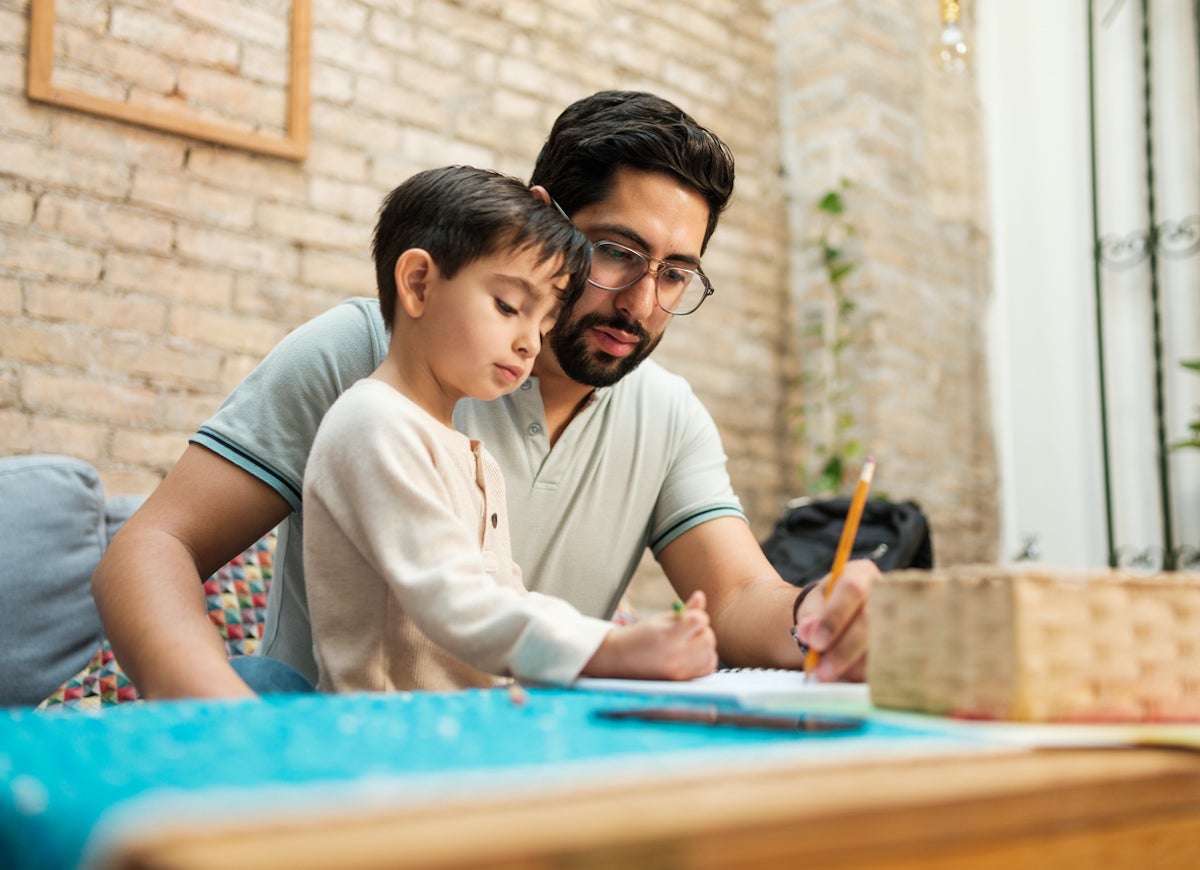
Research shows that too much screen time can have negative effects on developing children. According to the American Academy of Pediatrics, children aged two to five should only have one hour a day of screen time (children under two should have very minimal or no screen time), yet recommendations for teens aren’t much higher at a suggested two hours on a school day. However, with remote learning, these numbers can be unrealistic, as screens are necessary for many virtual learning tasks. So while your child will likely need some screen time during the school day, don’t center the learning space solely around a computer or tablet. Set limits by scheduling regular screen breaks for children every hour, and periodically check in to be sure they’re on task. And kids should have at their disposal a sketchbook or notebook, colored pencils, and other supplies.
Study Hall
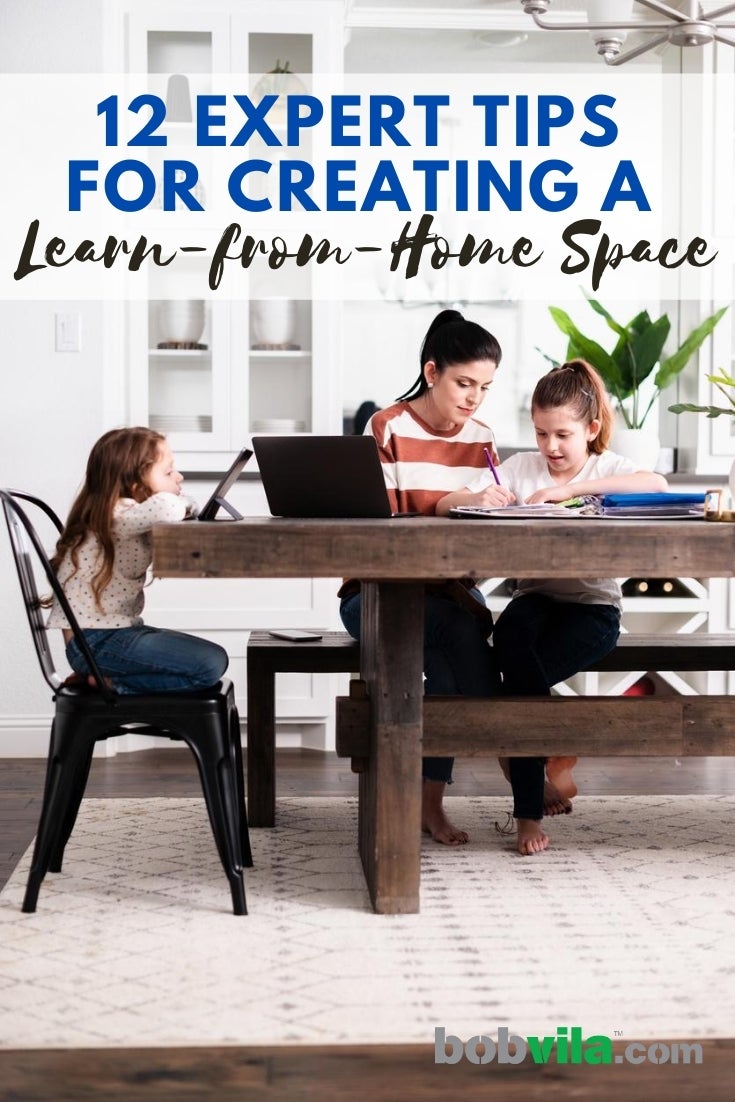
With some creativity and flexibility, you can create the right environment at home for a successful school year.

